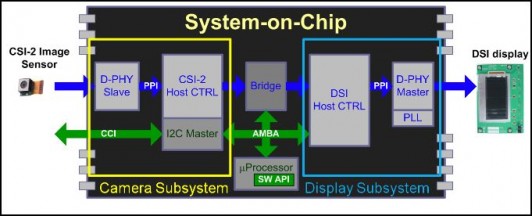More than 750 million smartphones and 300 million tablets will ship in 2016, requiring more than 2 billion processors. How will the market shape up?
 Jon Peddie Research (JPR) has released a new report on mobile devices and their processors. The report takes a close look at the staggering demand, the crowded market, and the inevitable changes ahead.
Jon Peddie Research (JPR) has released a new report on mobile devices and their processors. The report takes a close look at the staggering demand, the crowded market, and the inevitable changes ahead.
According to the report:
- Over three quarters of a billion smartphones will ship in 2016
- “Feature” and other phones will hit 869 million units in 2016
- Almost 300 million tablets will ship in 2016
- E-book readers shipments could reach 100 million a year by 2016
- Handheld game consoles will hit 91 million by 2016
The processors powering these devices will be truly amazing, says JPR, consuming remarkably little power, built using the latest nanometer technology, and delivering unbelievable performance and functionality. Although all of the devices will share some functionality and capabilities, no single device will kill any of the others—at least initially. Each device will have a different form, primary function, and price. All will be connected all the time, and most will have 3D displays and cameras.

More than16 processor companies and 4 IP suppliers will be chasing this market. Compared to the four or five processor companies chasing the PC market, is the mobile processor market over-populated by four-to-one? Is consolidation coming? Are there too many suppliers chasing the same customers?
The JPR report includes a historical perspective that illustrates the sharp growth devices have enjoyed recently. For example, the first standalone tablet was the GRiDPad in 1989. In 2001 Microsoft reinvented the concept calling it a “pen Computer.” Then in 2010 Apple brought the category to life with the iPad. The first smartphone was the IBM Simon in 1992, then Nokia entered the market in 1996 and since then, the segment has taken off like a rocket. The concept for the e-book came from Michael Heart in 1971, and the first battery powered standalone unit was the Rocket eBook in 1998, but it was the Amazon Kindle that lit up the market in 2007.
Other popular mobile devices like game consoles, navigation units, portable DVD players, and digital picture frames all use high resolution screens and sophisticated processors known as systems on a chip (SoC). These SoC’s are the key to the future of the mobile market.

The JPR Mobile Devices and their Semiconductors Market Study is available now in electronic editions, and can be purchased for $3,500. Full subscribers to JPR services receive Tech Watch (the company’s bi-weekly report) get a discount as part of their subscription. For information about purchasing the report, please call 415-435-9368 or visit the Jon Peddie Research website
About Jon Peddie Research
Dr. Jon Peddie has been active in the graphics and multimedia fields for more than 30 years. Jon Peddie Research is a technically oriented multimedia and graphics research and consulting firm. Based in Tiburon, California, JPR provides consulting, research, and other specialized services to technology companies in a variety of fields including graphics development, multimedia for professional applications and consumer electronics, high-end computing, and Internet-access product development. Jon Peddie’s Market Watch is a quarterly report focused on the market activity of PC graphics controllers for notebook and desktop computing.





